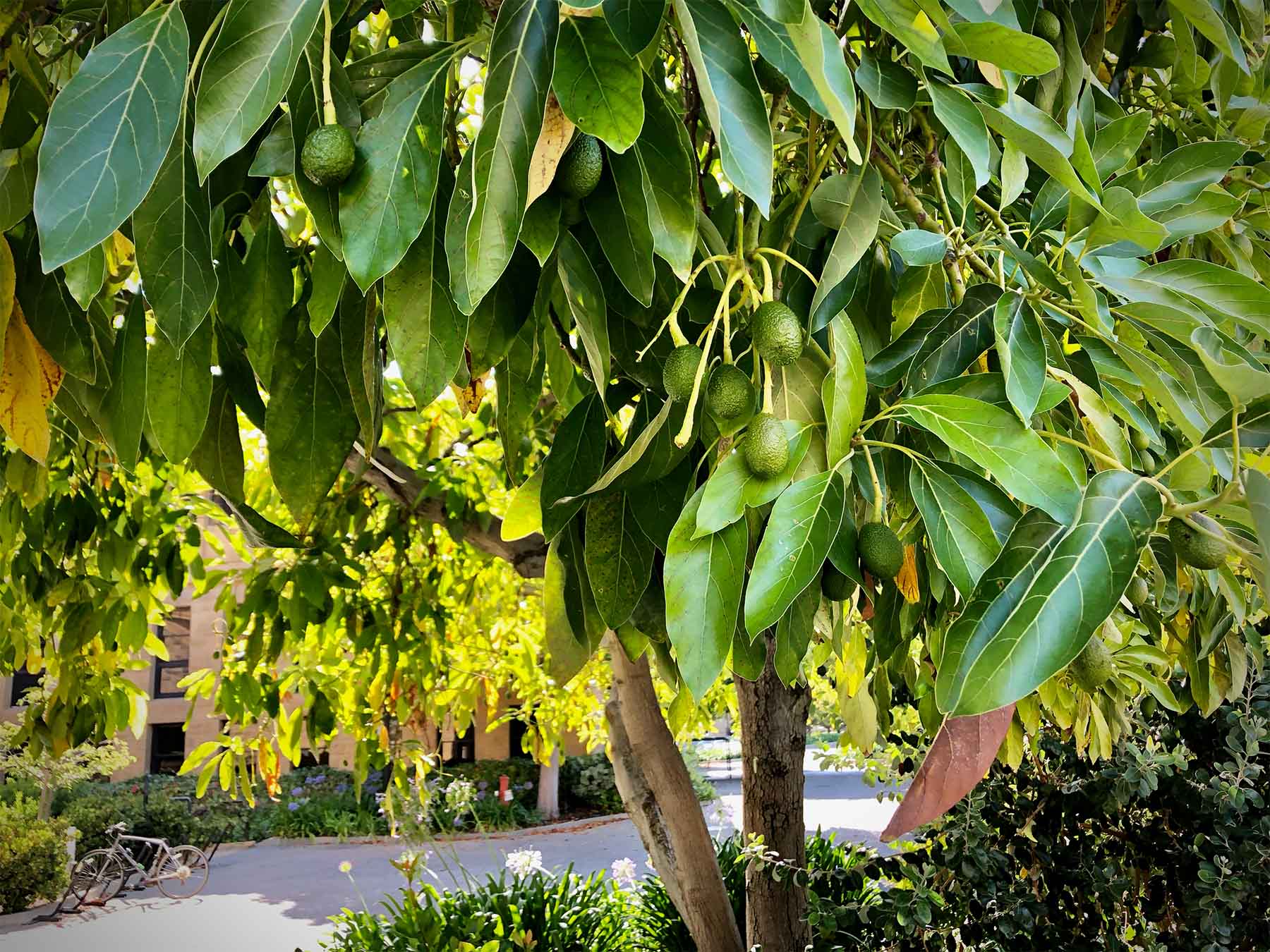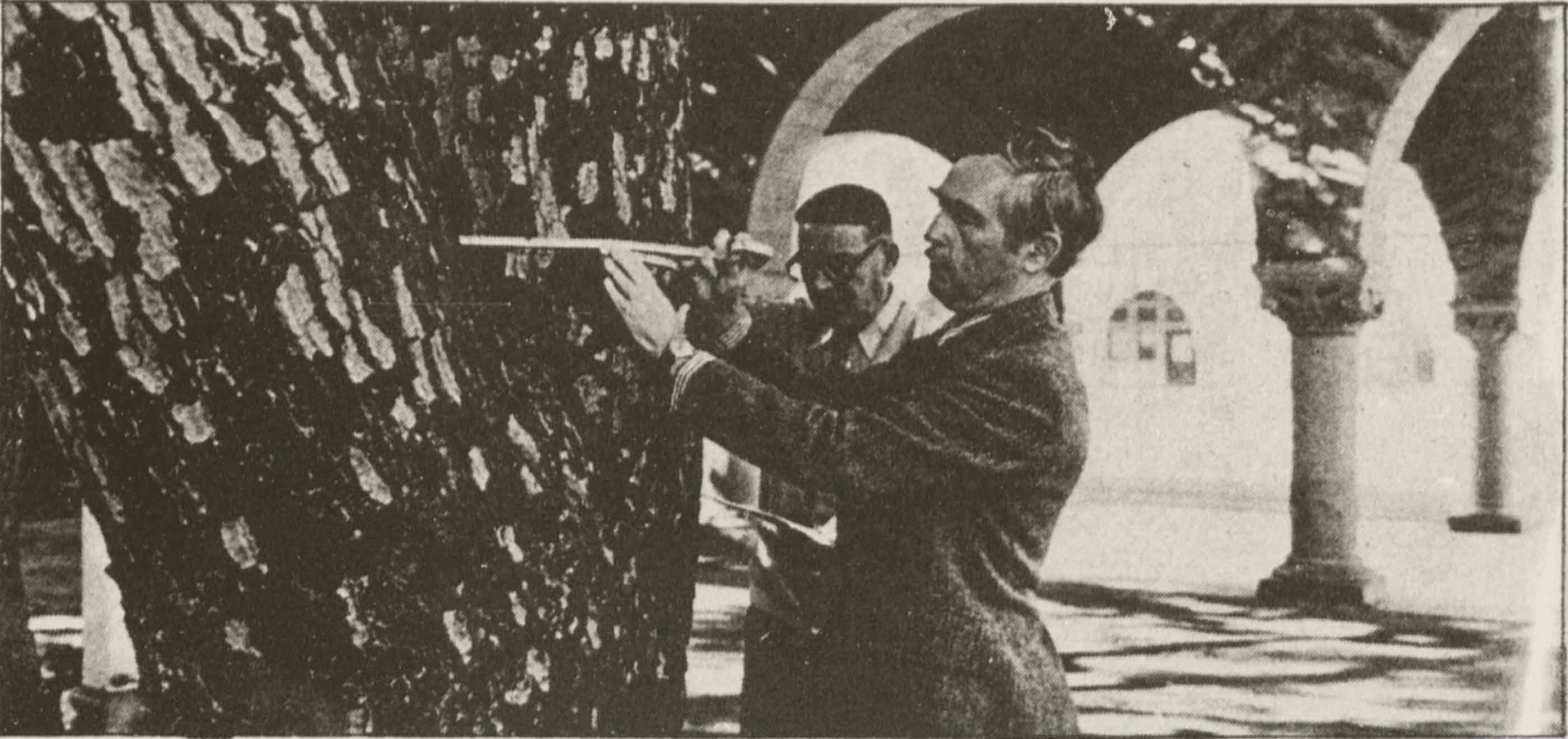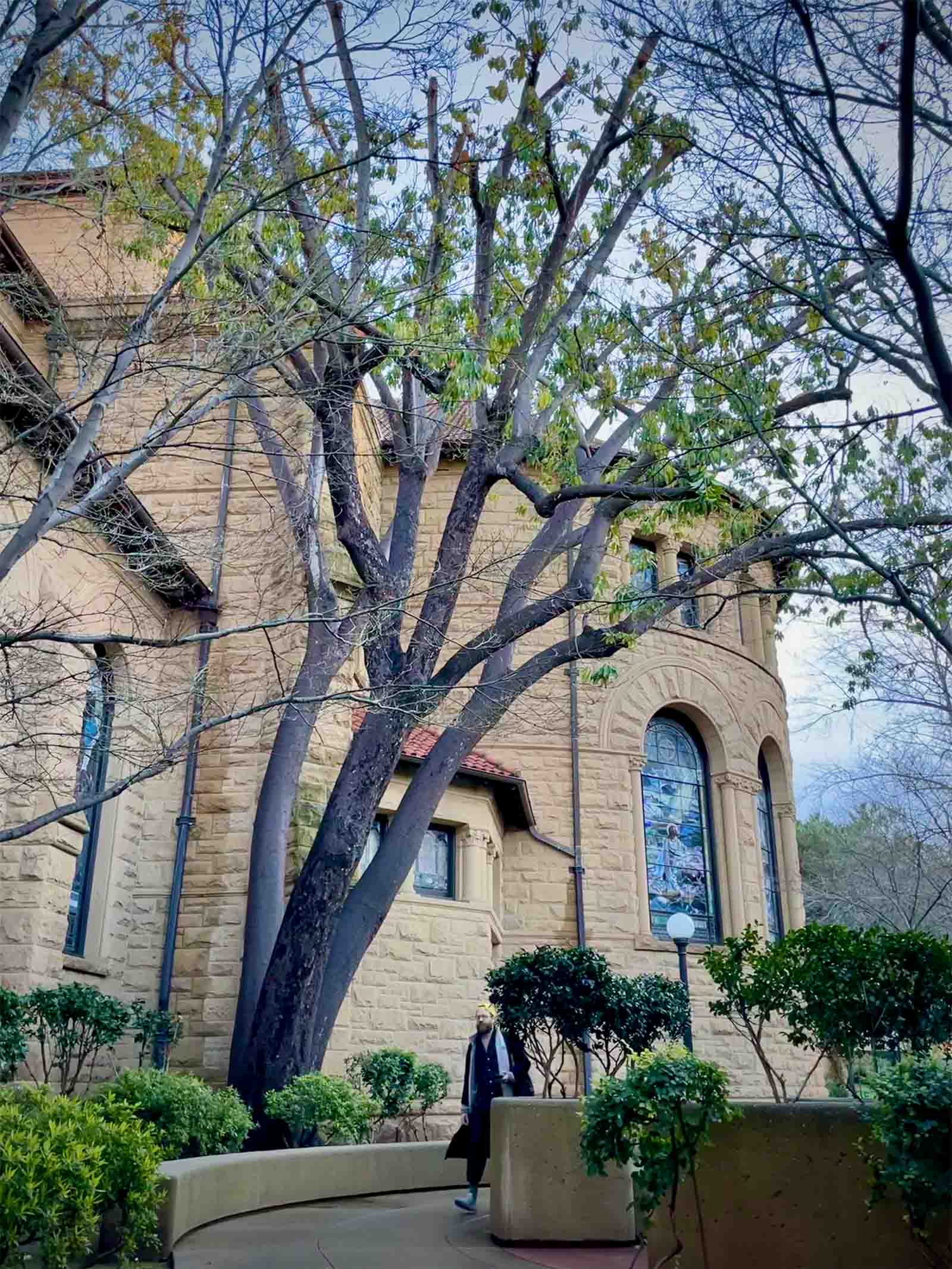Persea americana
 avocado
avocado


As one approaches the Inner Quad from Jane Stanford Way, a group of avocado saplings in the courtyard to the left of Memorial Court call to mind a shady grove of large such trees known to generations of alumni. Ripe avocados were found from time to time, often attracting enterprising harvesters. The sheltered courtyard situation enabled the trees to thrive with occasional signs of frostbite on the glossy oval leaves, up to 4 by 10 inches in size. Two of the trees were thought to be ‘Fuerte’; the others were Guatemalan.
In 1979 seven of the old avocados were to be sacrificed to facilitate reconstruction of Building 120 of the Main Quad, a tricky project that involved gutting the building while leaving the external sandstone blocks in place. Replacement cost of the trees was estimated at $18,360. Academic Secretary Eric Hutchinson led a revolt during which he threatened that Ron Bracewell would chain himself to the first avocado to be bulldozed. As a compromise, six of the seven were reprieved (Stanford Daily, Jan. 15, 1980). A similar survival ratio was noticed later when the picturesque red-spotted gums on Frenchman’s Hill were to be axed and residents protested. In the case of the avocados, however, two replacements were later planted and by 2000 they were in vigorous, healthy condition, identifiable by their smooth trunks, and bearing fruit.
In 2020, the last survivor of this group was removed – while still loaded with a hundred or more fruit — when the courtyard infrastructure was redone. The new avocados were planted a couple of years later: ‘Bacon’, ‘Fuerte’, ‘Hass’, and ‘Reed’. Their fruiting will be eagerly anticipated. Two other young ones are behind the shed in the backyard of Hammarskjöld (592 Alvarado Row). A tall specimen in the southeast courtyard of Encina Commons may be campus’s only productive specimen.

As is well known to many, the seeds of store-bought avocados can be germinated and grown as good office plants. A mighty three-trunked tree west of Memorial Church, much too close to the stone work to have been placed by a landscaper, may have been started in a campus office. Another between the McCullough and Durand buildings, perhaps of similar origin, lasted a few decades.
A dozen or more cultivars are available in markets, ranging from the smaller, dark purple ‘Hass’ to the large green ‘Pinkerton’. ‘Bacon’ and ‘Zuttano’ are other California varieties. Florida avocados, which derive from the West Indies rather than from Guatemala, are less favored. Jaguars eat avocados. Their use at sea gave rise to the term “naval butter.” The name avocado derives from Náhuatl ahuácatl, meaning testicle. The Spanish name for the tree is aguacate.
Also see:
- To the rescue: ancient avocado trees saved by faculty. Jeff Littleboy, Stanford Observer, Oct 1980.
- Profs want avocados spared. Joan O’Connell, Stanford Daily, 7 Jan 1980.
- Avocado trees saved. Stanford Daily, 15 Jan 1980.
About this Entry: The main text of this entry is from the book Trees of Stanford and Environs, by Ronald Bracewell, published 2005. Entry revised; young avocados in History Corner, Hammarskjöld, and Encina Commons added; note by John Rawlings on Persea thunbergii in parking lot at Century 12 Theater Complex in Redwood City removed; all locations up to date (Aug 2023, SP).



